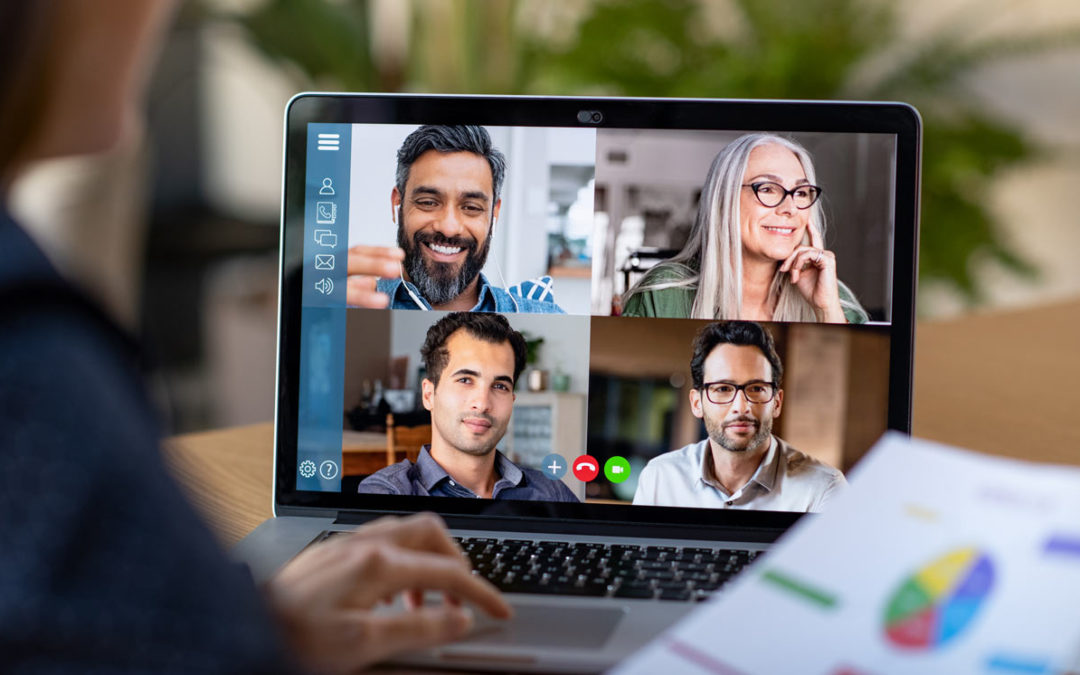In 2017 I implemented a policy in my business that we would conduct all meetings on video conference. Having a virtual business for over 30 years with very little in-person meetings, I found video conference to be a much more effective way to have a meeting or conversation than just using the phone.
What I discovered, was that setting expectations and even rules for video conferences determined their effectiveness. With inconsistent practices around video conferencing, you will see many bad habits and have a mixed bag of participation, focus and results.
In order to ensure that video meetings, both internally and with clients, are effective, I developed the following 10 best practices that when consistently applied will result in more productive meetings and deeper personal relationships:
1. Require cameras to be on
This is probably the most important tip for ensuring a quality meeting. When people have their cameras on, they are engaged and paying attention. When cameras go off, people start to multi-task, check email, etc. Additionally, the level of personal connection and communication is deeper when you can see facial expressions. This should be a requirement for all meetings and only ignored when extenuating circumstances justify turning the camera off.
2. Quiet place with minimal distractions
This might be a bit harder for many employees to follow right now, but extra care should be taken to separate workspace from distractions such as pets, kids, noise, etc. Having employees deliberately separate from these distractions will improve the value of your meetings.
3. Right equipment
In order to conduct productive video meetings, I recommend you provide your staff the right equipment including an upgraded camera and a quality headset. If you don’t want to use a headset, a separate microphone makes a big difference in the audio quality. Here is the mic I use that you can order online: https://www.bluedesigns.com/products/snowball-ice/
4. Professional background
One thing I discovered is that people pay a lot of attention to what is going on in your background during a video conference. I have had people comment about items in my home office that surprised me. I recommend you encourage employees to work on improving the space right behind them to ensure it does not distract from their meetings and looks professional. If the background can not be changed, a green screen can be put behind your chair and a virtual background can be selected. Zoom makes changing the background easy. You can even get a smaller green screen that attaches to the back of your chair if space is an issue.
5. Light in front
In order to get the best video quality, ensure that you have light coming in front of your face and not in back of you. When the light is brighter in back of you, it is difficult to see your face and the whole room looks dark. If you can turn your desk around so any windows are at your back, you will have better video quality. If this is not possible, consider getting a room darkening shade and adding a bright lamp in front of your face to brighten the video.
6. Dress to impress
When employees work at home, they may feel more relaxed and not take the same care to dress well or groom as they would if they were in the office. Now more than ever it is important to look your best when meeting with clients and even colleagues. Encourage employees to present their best selves when on video conference. They will have more confidence and present themselves at their best.
7. Record and transcribe meetings
With business continuity a growing concern, all meetings should be recorded and stored in an easily accessible storage location. This will help to ensure that people who miss meetings can easily view recordings to catch up later. I use an app called Rev (www.rev.com) to transcribe my important meetings. Notes from the transcriptions can provide valuable evidence of important project discussions or other decisions and actions that are being taken.
8. Mute people who are not talking
Inevitably you will have background noises that can affect the quality of audio for all participants. Asking everyone to mute and then unmute when speaking will ensure that the meeting has higher quality audio and a better recording and transcription.
9. Summarize action items
This is a good meeting practice anyway and an important process to ensure that decisions made in meetings get executed. Someone should be assigned the role of notetaker in every meeting and a summary of important next steps should be sent in email or recorded in project collaboration software to ensure important actions are followed through.
10. Don’t do meetings while driving
Over the years I have participated in many meetings where people join while driving. While it could be argued this is necessary because of schedules, it is risky and should be discouraged. Meetings can be distracting, and we want to encourage employees to concentrate on meetings when in them and on the road when driving.
By thoughtfully considering ways to enhance the quality and effectiveness of your video meetings, you can ensure employees don’t waste time and are fully engaged in important discussions. Once we all get back to being able to meet face-to-face, we can even incorporate some of these suggestions, and other meeting best practices such as preparation, into our regular meeting processes.
Video conferencing can be a highly productive and even cost effective way to meet with people in multiple locations. Once the current lock down conditions are over, I predict there will be less desire to travel for meetings and more desire to meet online. Now is a good time to get good business practices in place to ensure that video meetings are just as effective as in-person meetings, and even give us more time back in our day.

